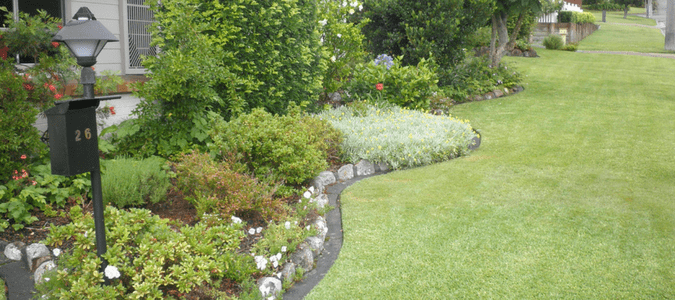
Look around Austin and the Texas Hill Country and you can see that this area is teeming with plant life. Trees like the Texas Ash, Cedar Elm and Arroyo Sweetwood. Shrubs like Bottlebrush and Pineapple Guavas. Flowers, yuccas, ornamental grasses and vines.
So why is it so hard to grow anything in your own yard?
Flowers wilt. Veggies never seem to get started. Even those bushes you planted in the front several years ago have barely shown any growth.
Yet somehow, your neighbors’ plants are doing just fine. It’s embarrassing. What are the secrets to Central Texas gardening?
First off, take a deep breath and stop beating yourself up so much. Setting up and maintaining a garden in and around the Hill Country is tough.
That lush plant life you see around the area? Mother Nature had to work hard for that, carefully helping plants to adapt to the rugged Central Texas landscape. And your neighbors? Well, they probably just know some tricks you don’t.
In this guide, we’ll cover Gardening 101, what you should be doing during certain months of the year in Central Texas, how to get a vegetable garden going and raised bed gardening.
Let’s start with the basics.
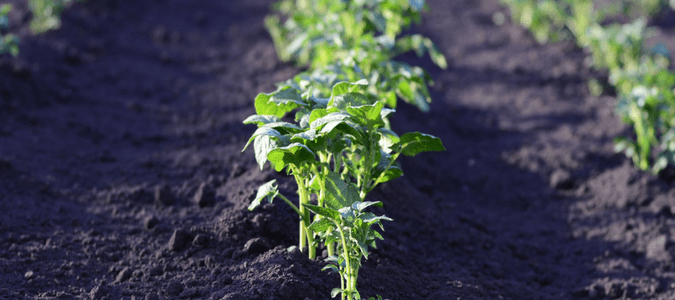
Gardening in Texas for Beginners
Homeowners in Central Texas often wonder why their gardens aren’t growing the way they’d like. While every situation is unique, there are usually some similarities between these “problem” scenarios. These are general mistakes that homeowners make which prevent them from having the garden they want.
To avoid some of these common pitfalls, we suggest you do your homework, follow a plan, pay attention to light and water needs, apply fertilizer and add mulch to your garden.
Do Your Homework
A huge factor in whether your garden will be successful or not depends on choosing the right plants for your area and then knowing how to take care of those plants.
This may seem obvious, but many garden issues stem from homeowners trying to fit a square peg into a round hole. Some homeowners assume they can treat all of their plants the same.
You need to know what your plants’ watering and light requirements are, which time of year is best to plant them and if they’re predisposed to succeed in the type of soil you have.
Plan Before You Plant
See if this sounds familiar:
You’ve been vaguely thinking about growing a garden. One day, while roaming around your local home improvement store, you see some gorgeous flowers and decide to get them. Plus a few nice-looking shrubs. Then, you add some tomato seeds to your cart. Also, that basil plant. Thinking about your favorite meals, you throw in some rosemary and thyme while you’re at it.
Then you head home, dig some holes, settle the plants and seeds in, add water and wait for the magic to happen.
The results? Probably not what you hoped for. Some grow well. Some become overwhelmed. Aesthetically, we’re guessing it just doesn’t look that good.
The lack of a plan for your garden is the easiest way to waste time and money. Instead of sticking to your plan, you engaged in trial and error (or, depending on your tools, trowel and error. Sorry, we couldn’t resist). The consequence of no plan? Error.
Next time, think about what you want before you buy. Draw it on paper if that helps. Plan out which plants will go where. This will enable you to think about how they’ll interact and what they’ll really look like next to each other.
Don’t Mix Light And Water Needs
While you study, plan and learn about the various needs of the plants you want, pay special attention to light and water needs. One of the most common mistakes you can make is to put plants with different light and water needs in the same small bed.
Hopefully, you can see why this is a bad idea–it can’t help but lead to over- or under-watering and lighting some of the plants. So, some will thrive while others struggle.
Test And Enrich
Yes, you want plants appropriate for the soil you have in your yard. That being said, there are ways to improve the quality of the soil you have.
It starts with doing a soil test. You can learn more about this by contacting your County Extension Service. Austin even offers free soil testing for urban gardeners.
The test will tell you which nutrients your soil is lacking. Generally speaking, Central Texas soils have high pH and are heavy in clay. How do you improve your soil? Add organic matter like compost and shredded leaves. Ideally, you want your soil to consist of around 40 percent organic matter so that your plants have the nutrients they need to thrive.
Don’t Pack, Do Mulch
Many people have been taught to pack down the soil after putting a plant in the ground, but this is not what Central Texas gardeners should do. In fact, you want to do everything in your power to avoid pressing down the soil at all, including using stone paths and steps that allow you to stay off plant beds.
One thing you should do after planting, though, is to add mulch. Unlike what you may have heard, mulch will not steal nitrogen from the soil, as long as you keep it on the surface.
What mulch will do is make your gardening work a lot easier by limiting weeds and insulating the ground so it stays warmer in winter and cooler in summer. That means less watering and less time spent removing unwanted plants.
So, there you have it. The basics. Now let’s talk specifics–starting with what you should do at particular times of the year.
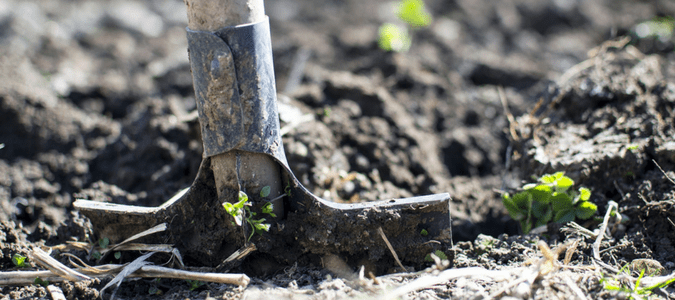
Learning the Central Texas Gardening Calendar
KRLU’s Central Texas Gardener is a great resource to advise local homeowners on what you should do in your yard on a month-to-month basis. Every single month, you can see suggestions on what to plant, what to prune, which plants you can move, what prep work you should do, what fertilization tasks to perform and more.
To give you an example of the type of information you can find, here is a list of some of gardening to dos for the months most of us are thinking about our outdoor areas:
- Prune dormant perennials, evergreen shrubs, ornamental grasses and roses (early).
- Although February is better, you can still spend March moving trees, shrubs, roses, and perennials. Just do so as early in the month as possible.
- Add compost to perennial beds and trees.
- Fertilize citrus (do this every couple of weeks throughout growing season), perennials, and trees.
- Dig away grass from tree trunks for several feet.
- Keep an eye out for powdery mildew.
- Use a natural fungicide.
- Mow weeds before they set seed.
- Plant turf.
April
- Prune bougainvilleas that haven’t already been pruned for overwintering, spring bulbs that have brown foliage and dead heads from flowering plants.
- Move succulents.
- Add compost to perennial beds and trees if you haven’t already done so.
- Dig away grass from tree trunks for several feet if you haven’t already done so.
- Continue to fertilize citrus, perennials and trees.
- Fertilize lawn.
- Add mulch to perennial beds as you cut back dormant plants.
- Add mulch to trees and roses (but avoid their bases).
- Watch for: aphids, green lacewings, ladybugs, largus bugs, spider mites, squash vine borers, stink bugs and tomato hornworms. Consider trying natural garden pest control to see if those methods are effective.
- Protect your plants from bugs and the various kinds of damage they can cause by blasting them off with water, checking the undersides of leaves, picking them off by hand, putting damaged leaves in the trash, spraying with a natural caterpillar control and deploying grasshoppers.
- Continue to mow weeds to prevent them from setting seeds. Remove any clippings with weed seeds.
- Continue to fertilize lawn.
- Plant lawn and water it until it is established.
- Do a soil test.
- Add compost and organic fertilizer to veggie gardens.
- Continue to weed.
- Continue to watch for powdery mildew.
- Prune dead heads from flowering plants, perennials that bloom in the fall, shrubs and roses that flower in spring, spring bulbs with brown foliage, tomato plants (remove sucker shoots) and vines.
- Move any remaining succulents and spring blooming bulbs.
- Continue to fertilize citrus.
- Fertilize foliar feed flowers and veggies using liquid seaweed.
- Fertilize bougainvilleas using high nitrogen.
- Watch for the same bugs and bug issues as in April.
- Change your lawn mower’s setting to “high” and only cut the top 1/3 of the grass.
- Naturally fertilize your lawn by leaving the clippings in place.
- Make sure to collect any seeds from plants that bloom in the spring and save them to plant in November.
- Continue to watch for powdery mildew.
- Continue to add mulch to trees and roses while avoiding the base.
- Continue to weed.
- Water new plants deeply regardless of rain, and check the soil down to 3 inches.
- Write down bug habits and bloom times in a garden journal to revisit in future years.
- Prune dead heads from flowering plants, perennials that bloom in the fall and any “once-only” spring bloomers you still haven’t pruned.
- Move any remaining succulents and spring blooming bulbs.
- Fertilize the same as in May.
- Continue to watch for aphids, green lacewings, ladybugs, largus bugs, spider mites and stink bugs.
- Keep mowing your lawn regularly following the guidelines above.
- Collect and save seeds as described above. Also, collect cilantro seeds after they have completely dried.
- Continue to add mulch to trees and roses while avoiding the base.
- Continue to weed.
- Continue to water new plants deeply regardless of rain, and check the soil down to 3 inches.
- Continue to write down bug habits and bloom times in a garden journal.
Whew! And that’s only some of the tasks that are recommended. For just four months. As you can see, gardeners in Central Texas can stay quite busy keeping their garden looking great and keeping plants healthy.
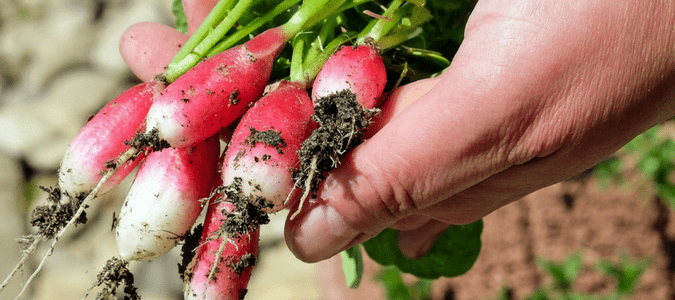
What You Need to Know about Central Texas Vegetable Gardening
Want to start a vegetable garden from scratch? The good thing about growing veggies in our area is that the climate allows you to do so all year long. The bad thing is that our soil isn’t always conducive to growing vegetables. Plus, you’ll need to plan ahead to keep veggies safe from the extreme heat of our summers and ensure they stay watered in often very dry conditions.
Beyond those basics, the most important thing to know is what to plant when. At the tail end of the winter planting period, you still have a bit of time to sneak those plants in.
Here’s a list of what to plant during every season. You’ll notice some overlap.
Winter
Winter in Central Texas is a good time to grow asparagus, carrots, lettuces (head and leaf), parsnips and radishes.
Spring
When Spring rolls around, you can plant black-eye peas, broccoli, eggplant, peppers, pumpkin, snap beans, sweet corn, sweet potatoes and tomatoes in our gardens.
Summer
Even during the hot Austin summertime, you can get in your veggies, including beets, cauliflower, chard, collard greens, cucumbers, mustard, potatoes, pumpkin and tomatoes.
Fall
Autumn is a great time to try beets, lettuces (head and leaf), radishes, spinach and turnips in your Central Texas garden.
Texas A&M also has a great list of vegetables that are easier to grow in the area that you might want to check out.
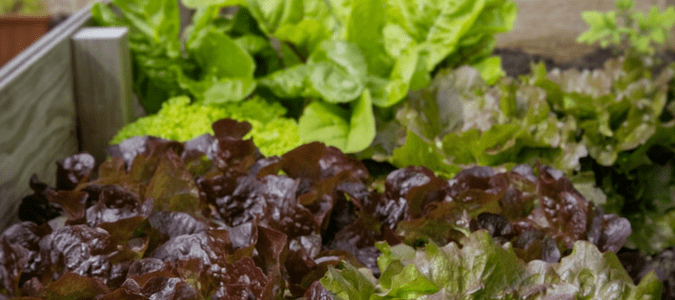
Raised Bed Gardening in Texas: How It Works
What if your soil is just too tough to deal with? That’s not out of the question in our area, especially if you live in an urban area.
This is where raised garden beds come in handy.
Here’s how they work and why some homeowners choose this type of gardening:
- You build a raised garden bed. You can do this from scratch or buy a kit.
- Raised beds include a weed barrier on the bottom. As the name implies, this barrier makes it far more difficult for weeds to invade your garden bed and negatively impact your growing veggies. That’s the first benefit of this type of gardening.
- Raised beds don’t use the soil that’s already in your yard. Instead, you will need to purchase some good loam topsoil and compost and fill the bed with it. This is the second benefit, because it provides your veggies with the ideal soil mixture to encourage growth. In fact, it will even allow you to plant vegetables that wouldn’t natively grow in the regular soil.
A third benefit? You won’t have to bend down so far to maintain the beds!
Let ABC Home & Commercial Make Your Gardening Easier
With these tips, just about anyone in Central Texas should be able to maintain a great garden by putting in the work and the time. You can still make your job easier though—by getting in touch with ABC Home & Commercial Services. With our decades of experience in the area, we know exactly what it takes to maximize the potential of any garden. Our experts can help you make yours the envy of your neighborhood. Whether you’re looking for help mowing, fertilizing, setting up an irrigation system, or even designing your garden, we can help.
